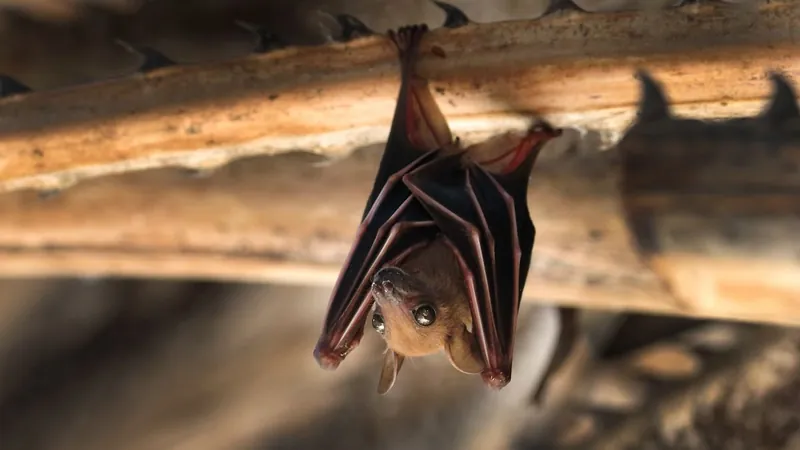
The Surprising Reasons Bats Prefer Sleeping Upside Down
2025-01-26
Author: Arjun
Introduction
Have you ever wondered why bats choose to sleep hanging upside down? While it might seem unusual, this behavior is a fascinating result of their evolutionary history and unique physiology.
Evolutionary Background
According to Tara Hohoff, a bat biologist with the Illinois Bat Conservation Program, this upside-down lifestyle is linked to how bats evolved to take to the skies. Historically, their ancestors were land-dwelling mammals that initially began gliding, somewhat similar to modern-day flying squirrels. As these ancestral creatures adapted, they developed strong limbs that eventually transformed into the wings we see today.
Anatomical Adaptations
Unlike birds, bats lack hollow bones, which are essential for generating lift during flight. As Hohoff explains, this anatomical structure means that bats maintain their upside-down sleeping position to make it easier to launch themselves into flight when needed. Essentially, hanging allows them to drop directly into the air.
Musculature and Skeletal Structure
One of the crucial aspects that enable bats to sleep in this position comfortably is their unique musculature and skeletal structure. When a bat finds a suitable roosting spot, it contracts the muscles associated with its talons, causing them to open momentarily. Once the talons touch the surface, the bat relaxes, and gravity does the heavy lifting—literally. The weight of the bat’s body engages the tendons in such a way that the talons grip firmly, locking in place without exerting much energy. This efficient design allows bats to remain suspended for long periods without strain.
Physiological Advantages
In stark contrast to humans, who might experience discomfort or even health risks from hanging upside down (think headaches or blood pooling), bats have evolved to handle this position quite well. Their small body size and specialized circulatory system enable their hearts to pump blood effortlessly, alleviating any potential issues.
Evolutionary Advantages of Hanging
As this roosting behavior became common, it allowed bats to further adapt evolutionarily. The lightweight skeletons necessary for flight also meant that their leg bones lack the strength to support their weight efficiently. Thus, hanging upside down eliminates the need to rest on their less robust legs.
Survival Benefits
Moreover, this upside-down lifestyle offers a significant survival advantage. By roosting in hard-to-reach locations like cave ceilings, bats minimize their vulnerability to predators such as owls, hawks, and snakes.
Variations Among Bats
Interestingly, not all bat species adhere strictly to this behavior. For example, disk-winged bats found in Central and South America possess specialized suction cups on their thumbs, allowing them to cling to the undersides of leaves at various angles, not just upside down.
Conclusion
The evolution of bat flight and their unique roosting habits opens a window into the remarkable adaptations that set them apart from other mammals. As Hohoff notes, further research could enhance our understanding of these flying mammals and their diverse behaviors. Could there be even more secrets hidden in the world of bats? Keep exploring to discover the intricate lives of these fascinating creatures!

 Brasil (PT)
Brasil (PT)
 Canada (EN)
Canada (EN)
 Chile (ES)
Chile (ES)
 Česko (CS)
Česko (CS)
 대한민국 (KO)
대한민국 (KO)
 España (ES)
España (ES)
 France (FR)
France (FR)
 Hong Kong (EN)
Hong Kong (EN)
 Italia (IT)
Italia (IT)
 日本 (JA)
日本 (JA)
 Magyarország (HU)
Magyarország (HU)
 Norge (NO)
Norge (NO)
 Polska (PL)
Polska (PL)
 Schweiz (DE)
Schweiz (DE)
 Singapore (EN)
Singapore (EN)
 Sverige (SV)
Sverige (SV)
 Suomi (FI)
Suomi (FI)
 Türkiye (TR)
Türkiye (TR)
 الإمارات العربية المتحدة (AR)
الإمارات العربية المتحدة (AR)